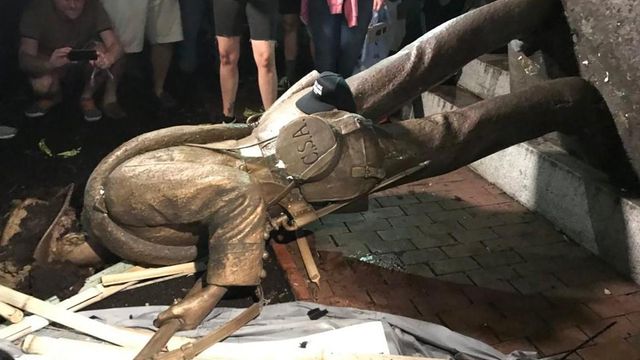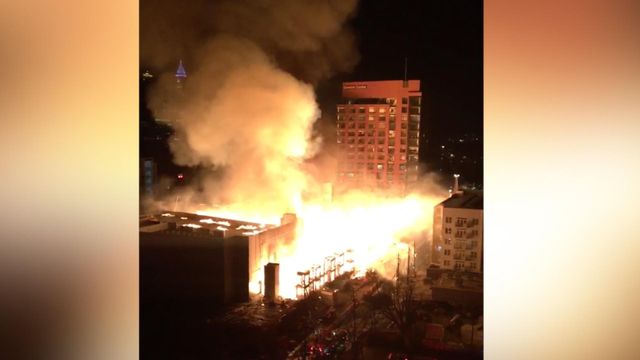Decade of '10s in Triangle told in 10 stories
Whether you believe the decade ends at midnight Wednesday or not for another year, there's no disagreement that the last 10 years have seen some major news stories in the Triangle.
Posted — UpdatedFrom severe weather to culture wars, from environmental disasters to man-made catastrophes, the Triangle has seen a bit of it all.
Democrats had controlled state government for more than century before the Republicans gained a majority in both the House and the Senate in the 2010 elections.
The power shift moved North Carolina, long seen as one of the South's more progressive states, hard to the right. The GOP cut taxes and unemployment benefits, limited spending, expanded gun rights enacted new restrictions on voting and abortions and rolled back environmental regulations, among other changes.
Democratic Govs. Bev Perdue and Roy Cooper were in an almost constant battle with the Republican legislature – even Republican Gov. Pat McCrory fought lawmakers on several occasions – but veto-proof majorities for much of the decade muted most of the governors' power. Left-leaning groups turned to the courts to help cut into the GOP majorities by challenging legislative and congressional district maps the Republicans drew as racial and partisan gerrymanders.
More than 25 tornadoes touched down dozens of times in 33 North Carolina counties on April 16, 2011. Twenty-four people were killed, and the storms destroyed or damaged more than 6,500 homes and 113 businesses.
The outbreak was the largest collection of tornadoes in the state in 27 years, according to the National Weather Service.
One tornado flattened much of a Lowe's Home Improvement store in Sanford and later left a trail of destruction across Raleigh, from South Saunders Street through the campuses of Shaw and St. Augustine's universities and neighborhoods east of downtown Raleigh and into north Raleigh. Another line of tornadoes damaged a Fayetteville elementary school and then moved through Johnston and Wilson counties, leaving some to rebuild and others seeking a new start elsewhere.
Half of the deaths were reported in rural Bertie County, while another four were young cousins, ages 3 to 9, who died in a north Raleigh mobile home.
During the May primary, North Carolina voters overwhelmingly backed an amendment to the state constitution that defined marriage as a union between a man and a woman.
Supporters said the amendment was necessary to protect the institution of marriage, as a growing number of states began recognizing same-sex marriages. But opponents said it wrote discrimination into the constitution and would result in a number of unintended consequences, such as weakening domestic violence protections and costing some families health coverage.
The amendment was short-lived, however, as the U.S. Supreme Court recognized same-sex marriages nationwide in June 2015. Yet, it was merely the first shot by social conservatives against the LGBT community in North Carolina. State lawmakers would pass legislation in 2016 that pre-empted local nondiscrimination ordinances that included sexual orientation or gender identity, and the law also notoriously required transgender individuals to use public bathrooms that matched their birth gender.
Believing the policies of the Republican-controlled General Assembly were harming North Carolinians, the state NAACP, churches, union groups and other organizations launched weekly protests at the Legislative Building. The "Moral Monday" demonstrations pushed back against limited access to health care, voting law changes, attacks to immigrant rights and other issues.
Hundreds of people were arrested in the protests, although most charges were later dismissed because courts ruled police had violated people's rights to peacefully assemble and speak.
Although the protests peaked in 2013-14, they continued on and off for five years and provided a blueprint for massive teacher rallies at the legislature in recent years. Rev. William Barber, the state NAACP leader who spearheaded the Moral Monday effort, has taken the movement nationwide through his group Repairers of the Breach and its Poor People's Campaign.
The ash left over when coal is burned for energy has been stored for decades at power plants across North Carolina with little notice. That changed on Feb. 2, when a containment pond at a Duke Energy plant near Eden dumped tons of toxic sludge into the Dan River. Coal ash was found in the river as far as 70 miles downstream.
The spill prompted lawmakers to push Duke into closing all of its coal ash ponds statewide, digging up the ash at several considered to be high risk so it could be transferred to lined landfills and draining and covering the remaining ponds, leaving the ash in place. Duke also was required to supply water to residents who live near the ash ponds after testing found some chemicals linked to the ash in groundwater and well water.
Environmental regulators this year ordered Duke to dig up all of its ash ponds to ensure no further groundwater contamination, even though it could double the cleanup cost and stretch out the timeline for the effort.
The rolling hills south of downtown Raleigh had been the site of a state psychiatric hospital since the 1850s, but the state moved the last patients out of Dorothea Dix Hospital and closed the facility in 2012, opening up a valuable piece of real estate.
State lawmakers balked at an initial deal to lease the 306-acre site to Raleigh for 99 years, so Raleigh officials and state leaders negotiated for another two years before reaching an agreement under which the city purchased the Dix site for $52 million, with plans to turn it into a Central Park-like destination.
While planners worked to develop a master plan for the park – the first phase is expected to get underway in 2020 – Dix Park has become a destination for a few weeks each summer for people to wander through a massive sunflower field.
Days after Hurricane Matthew devastated Haiti as a Category 5 storm, it churned up the East Coast as a much weaker Category 1 hurricane before stalling over eastern North Carolina in early October. As Matthew spun in place for days, it dumped record amounts of rain across the region.
More than two dozen people died in North Carolina during and after Matthew, most from flooding, as the deluge caused the Tar, Neuse, Cape Fear and Lumber rivers to swamp nearby towns and fields.
Like the storm, the recovery effort stalled in North Carolina, as mix-ups at the state level led to delays in approving applications for federal disaster aid. The recovery was set back even further when Hurricane Florence hit in October 2018, flooding many of the same residents and businesses for a second time in two years.
It was the biggest blaze Raleigh had seen in almost 100 years. The five-alarm fire engulfed an apartment building under construction near the Glenwood South restaurant and bar district on March 16 and spread to nine nearby buildings. Miraculously, no one died, and the most serious injury was to a firefighter cut by flying glass.
Authorities were never able to determine the cause of the fire, but to try to rule out arson, they used Google data to determine who might have been in the area at the time.
The Metropolitan, where the fire started, took almost two years to rebuild and open, and residents of The Quorum Center, an office and condominium tower across the street that sustained extensive damage, had to wait even longer until they could get back into their homes.
After years of demonstrations, protesters finally pulled down the Confederate statue that had stood on the University of North Carolina at Chapel Hill campus for more than a century on Aug. 20. Chancellor Carol Folt had the monument's pedestal removed five months later, leading the UNC Board of Governors to oust her four months before her planned resignation.
Even with Silent Sam gone, monument supporters and opponents continued to clash at its former site on McCorkle Place. UNC officials were adamant that the statue not be returned to campus as a matter of public safety, even shooting down the idea of a facility that could put Silent Sam in historical context.
To get around a state law restricting the removal of publicly owned Confederate monuments, the Board of Governors worked secretly with the Sons of Confederate Veterans on a deal under which the SCV would take control of Silent Sam and UNC-Chapel Hill would fund a $2.5 million trust for the statue's preservation. The deal was roundly denounced as funding white nationalism – a foundation even pulled back a $1.5 million research grant to the university – and a judge is reviewing the deal to determine whether it's legal.
A crew installing underground telecommunications cables drilled into a natural gas line on April 10, leading to an explosion that rocked the neighborhoods west of downtown Durham. Two people were killed, and about two dozen were injured in the blast.
Some nearby businesses didn't reopen for months, and a health clinic even said someone looted patient records that weren't secured as employees evacuated in the chaos after the explosion.
State officials fined three companies for workplace safety violations in the incident, and Durham officials reviewing the city's response to the explosion found some shortcomings that need to be addressed in case another catastrophe hits the city.
Related Topics
• Credits
Copyright 2024 by Capitol Broadcasting Company. All rights reserved. This material may not be published, broadcast, rewritten or redistributed.






